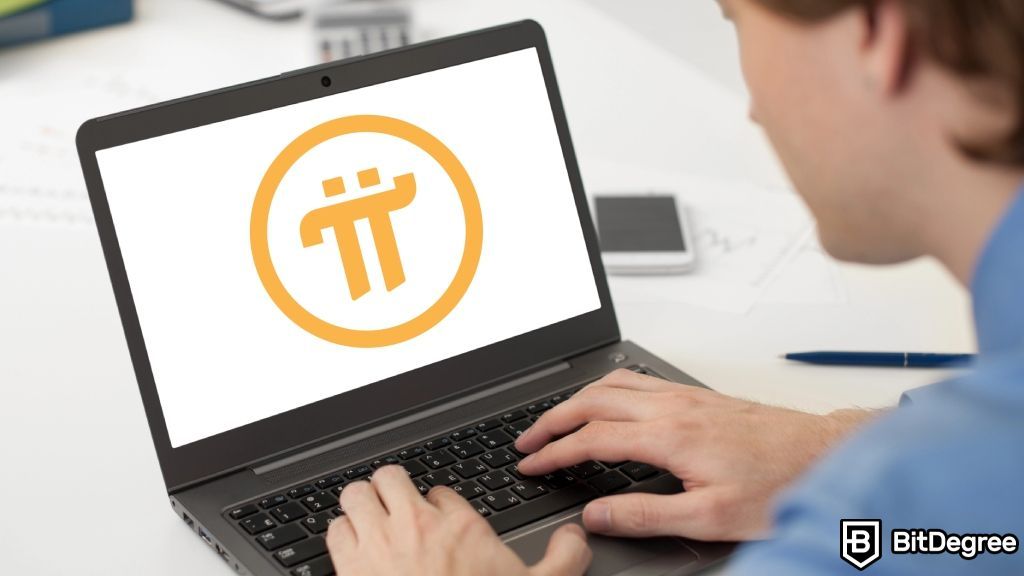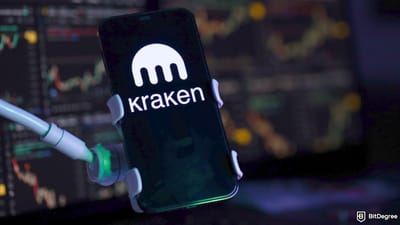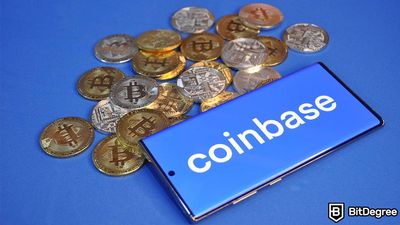Key Takeaways
- Pi is now tradable on a few centralized exchanges like MEXC, Gate, and Bitget;
- The Open Mainnet launched in February 2025, but many users still can't trade the tokens they mined;
- There’s still no confirmed timeline for broader exchange adoption on major platforms like Binance or Kraken.
Stop overpaying - start transferring money with Ogvio. Join the waitlist & grab early Rewards NOW! 🎁
It probably wouldn’t be an understatement to say that Pi has made a massive splash in the crypto world. It even ranked among the top projects by user interest on the BitDegree Crypto Tracker up until 2024. With so much buzz and mystery surrounding it, it’s no surprise that one of the most common questions is: How to buy & sell Pi coins?
With its overwhelming popularity, you’d expect to find Pi listed across top-tier exchanges like Binance, Kraken, or Bybit. But as of now, Pi is only available for trading on a few select platforms.
Despite its presence on some CEXs, many Pi holders still can’t trade coins they mined. And with ongoing questions like “Will Pi be worth anything?” or “Is it real yet?”, the confusion is still very real.
But don’t worry! This guide is here to walk you through everything: from what Pi actually is, to how trading works, and what to expect going forward.

Did you know?
Subscribe - We publish new crypto explainer videos every week!
Sidechains in Crypto Explained EASILY (Animated)


Table of Contents
- 1. How to Buy / Sell Pi Coin?
- 1.1. Pi Coin VS Pi IOUs
- 2. The Secret(s) Behind Pi Coin's Hype
- 3. How to Buy & Sell Pi Coin in 2025
- 3.1. How to Buy and Sell Pi Coin on MEXC
- 3.2. Buying and Selling Pi Coin on Binance
- 3.3. The DEX Route
- 4. An Overview of Pi Network
- 4.1. What Is the Pi Network?
- 4.2. How Pi Aims to Stand Out
- 4.3. The Controversies Around Pi
- 4.4. Mainnet Uncertainty and Lingering Doubts
- 5. Conclusions
How to Buy / Sell Pi Coin?
I’m not going to beat around the bush and tell you this straight away - if you’re looking to buy or sell Pi coins, it’s finally possible, but only under certain conditions.
Latest Deal Active Right Now:Up until February 2025, that wasn’t the case. Back then, the Pi Network was still operating in what it called an “enclosed mainnet” phase. But now that the Open Mainnet has officially launched, things are starting to shift. Some centralized exchanges (CEXs) have enabled limited trading of Pi, such as MEXC, Bitget, and Gate.
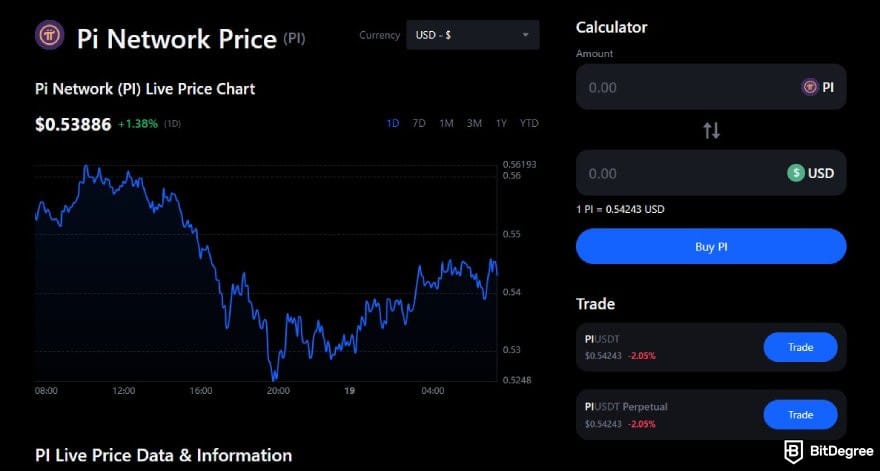
That said, don’t rush just yet. If you Google things like “buy Pi coin”, “buy Pi network coin”, or something along the lines of “where to sell Pi crypto,” you’ll still get bombarded with a lot of conflicting (and sometimes plain inaccurate) information. So, I’m here to set the scene for you - let me explain this as clearly and concisely as possible.
The so-called Pi coin is part of the Pi Network. It’s essentially a huge community of people around the globe, all “mining” Pi coins on their mobile devices (naturally, as with most other projects[1], the network was started by a centralized business entity). I put “mining” into quotes, since it’s not really the type of mining that you’d think of when you hear the term used in a crypto context.
📚 Read More: What is Crypto Mining?
The semantics don’t really matter - what matters is that this is how you would go about earning Pi coins.
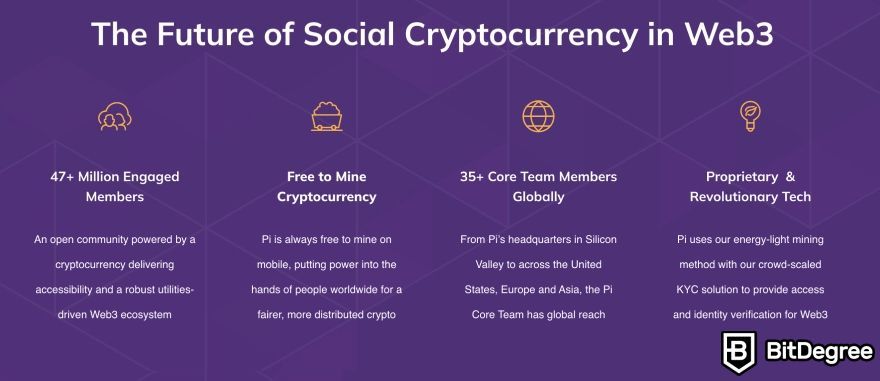
Now, once you see the coins accumulating in your wallet, the next step is to learn how to sell Pi coin… Right? Well, assuming you’re just looking to make a profit, that is.
Whatever the personal circumstance might be, the truth of the matter is that, as of writing this “How to Buy & Sell Pi Coin” tutorial, you can’t just transfer your Pi and trade it unless your coins have been migrated to the Open Mainnet. To do that, you’ll need to complete KYC and follow the official migration steps.
Otherwise, you’re still able to participate in certain Pi Network activities and contribute to its development, but are not able to “exit the enclosed ecosystem” - e.g., buy Pi crypto, or check how to sell Pi crypto.
As of now, many long-time users have accumulated a significant amount of Pi. But without following the migration steps, their coins remain within the app’s closed environment.
Since I’m pretty sure I know what you’re going to say next, let me address the “I saw Pi listed on X exchange” comments.
Pi Coin VS Pi IOUs
Now, as a disclaimer, I will say that information on this is a bit murky - different outlets claim different things, which is naturally quite inconvenient for anyone looking at how to sell Pi Network coins.
A few Google searches might quickly form this idea that not only is Pi coin listed on a couple of major exchange platforms (HTX being one of them), but it also has a fluctuating price tag attached to it, as well.
As of June 2025, the listing for Pi Network on HTX is limited to the perpetual market for PIUSDT. Additionally, the dedicated price chart page for Pi Network on the platform no longer exists.
Naturally, this goes against everything that I’ve said in this article, about not being able to buy or sell the asset - after all, if it’s listed on an exchange, and has a moving price, it’s a publicly available asset, right?
Well, this is where things get even more interesting.
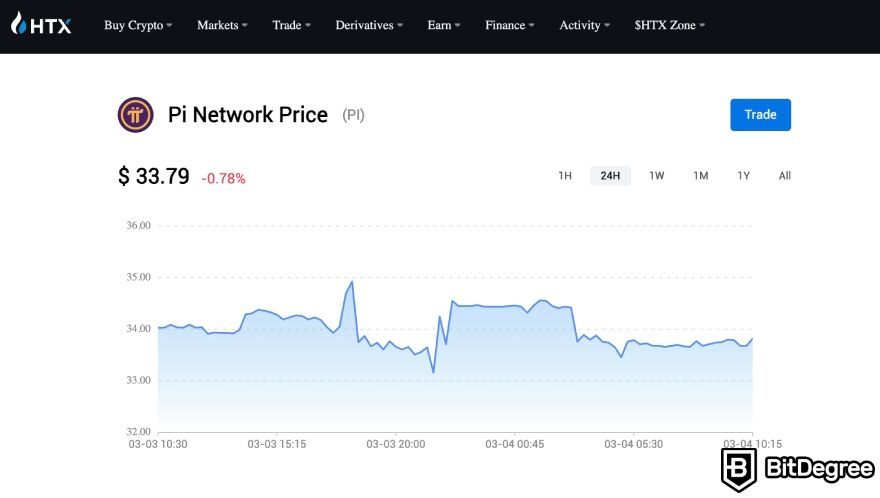
Back before the Open Mainnet launched in February 2025, no exchanges out there - neither CEXs, nor DEXs - listed and/or supported Pi coin. The listing info that you saw at the time referred to something the community called “Pi coin IOUs”.
An IOU is just like it sounds - an “I owe you”, a sort of lending/borrowing agreement, usually expressed in the form of a written note. It’s a popular concept all around the world, spanning multiple industries, and crypto isn’t an exception.
So, what you used to see listed on HTX and other exchanges wasn’t the real Pi coin, but a sort of IOU for it. In turn, the representing value (price tag) referenced that IOU, as well, and not the token minted on the Pi Network blockchain. During my latest research, I can still find price charts for Pi IOU in several exchanges, even major ones like Coinbase.
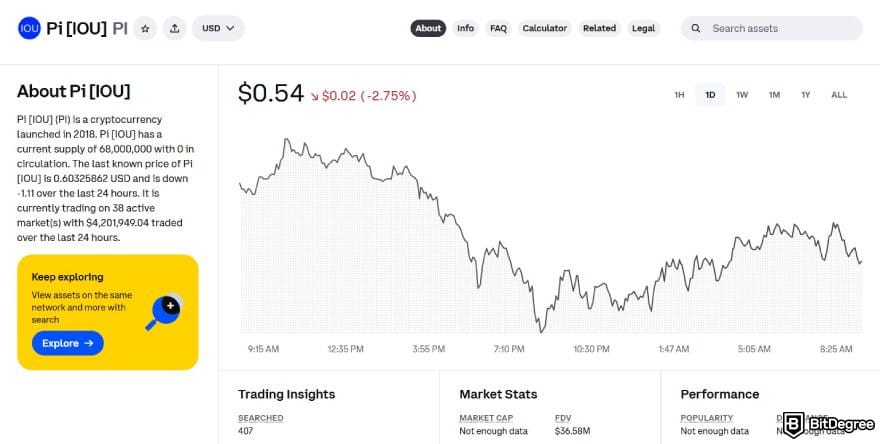
That said, since the Open Mainnet launched, this has started to change. Some centralized exchanges, including MEXC, Bitget, Gate, and a few others, now offer real Pi trading pairs (usually Pi/USDT).
However, these are only available to users who have completed KYC and migrated their Pi to the Open Mainnet. If your coins are still locked in the app (inside the “enclosed” ecosystem), you still can’t sell them - at least, not through official channels.
You can buy Pi with USDT on select exchanges that list the pair, but only if you're using migrated Mainnet tokens. Pi Network has not officially endorsed these listings, and liquidity may be limited.
Now, does that make a difference? Well, as far as the price is concerned, it definitely might, but it’s still hard to say. The Pi Network team has not confirmed or endorsed any specific listing, and the circulating supply on exchanges remains limited. As a result, prices can still behave unpredictably and don’t yet reflect a true market consensus.
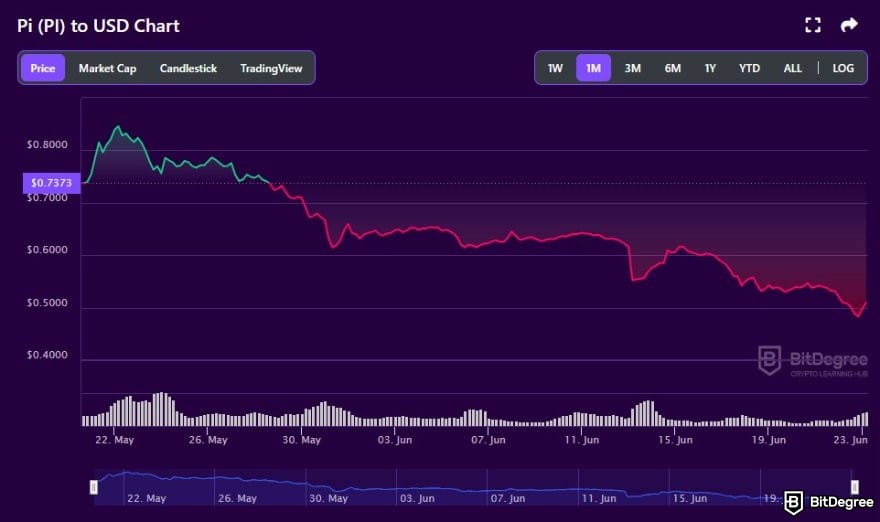
This is important to hammer in - the price that you see attached to IOUs in the past, and even current exchange prices, are influenced by limited liquidity and speculation, and may not accurately represent the real long-term value of Pi coin.
I’d assume that this is quite relevant to anyone looking into how to buy Pi coin.
But let’s not glance over the IOU fact, either. While it was certainly a bit of an unusual situation, the fact of the matter remains the same - this has been a confusing ordeal for most people trying to figure out “how do I sell my Pi coins?” and just wanting to cash out their proposed earnings.
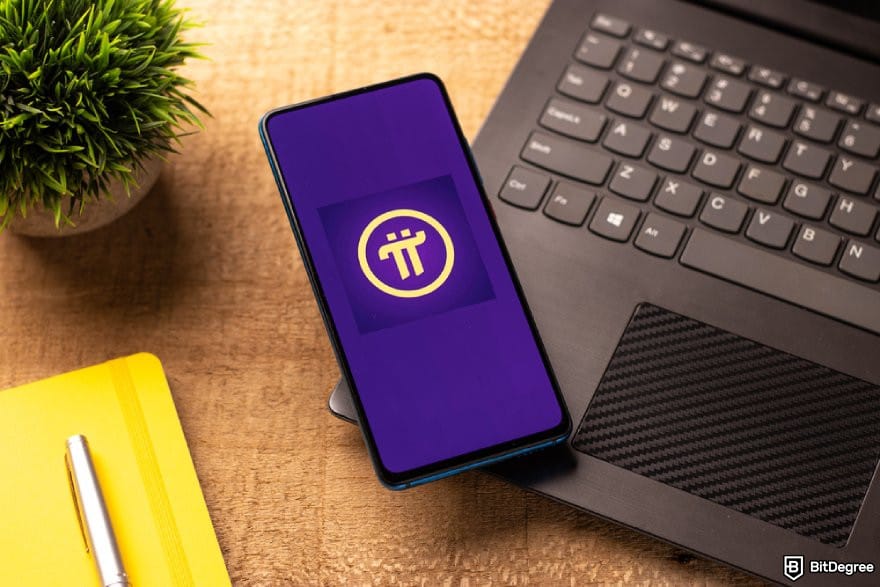
It circles back to the point I’ve been trying to make in the entirety of this article - even now, while trading is technically possible in some cases, for many users, you still can’t sell your Pi unless your coins are migrated and your identity verified.
The Secret(s) Behind Pi Coin's Hype
If your only interest is how to sell Pi Network coins or where to buy Pi Network, patience - I’ll get into some potential solutions for your situation in a bit. Before that, though, I’d like to address the buzz that Pi had received back in the day, and the potential reasons for it.
📚 Check Out: Pi Network Price Predictions
I even pointed it out at the beginning of this “How to Buy & Sell Pi Coin” tutorial, Pi continues to dominate interest. Even discarding the fact that it’s been topping the popularity charts on the BitDegree tracker a few years ago, this was once a phantom asset that raised questions all around the internet, especially in early 2024.

“Phantom asset” used to mean it didn’t exist in a publicly-tradable coin or token form. Yet even back then, exchange platforms like HTX (and all the way to Binance) had articles talking about it, trackers showing a “price,” and unofficial IOU listings.
You must admit - it’s a rather unique situation! Not something you’d see all that often within the industry. So, what’s going on here? What’s with all of this sudden popularity? Well, as with everything in the crypto market, it’s a combination of circumstances, the main ones including:
- The advertising model of the company behind Pi;
- Hearsay & speculation (people inquiring about will Pi crypto be worth anything, and how to buy & sell Pi network coin);
- The ongoing bull run.
Let’s break it down from the top.
Referral-Driven Adoption
The advertising model of the company behind the Pi Network is, well… Interesting. It’s actually somewhat of a cause for concern online, in different Pi community circles.
This is because, as per the claims of multiple individuals, Pi appears to be functioning via a pyramid-like model. It’s heavily referral-driven - you need to have an invitation to get in (or, you used to - today, invitations still offer bonuses, but access is less restricted), and the entire app is very “refer-more-people” oriented.
As of writing, you still get bonuses today for inviting friends, even though you no longer need an invitation to join.

Whenever you have a heavy emphasis on referrals, this naturally acts as a sort of innate marketing strategy, in and of itself. People invite friends, the word spreads around, and it becomes a snowball effect. Undoubtedly, this is a huge part of what makes Pi so popular even now.
Speculation & Profit-Driven Searches
Another factor would be the speculative nature of such assets. Obviously, people who are looking at how to buy & sell Pi coins are hoping to either jump into a potential moonshot, or to cash out some profits. In the past, this wasn’t possible at all, but today, thanks to the Open Mainnet and new exchange listings, some users can start doing exactly that.
Seeing as the market is exhibiting a lot of bullish sentiments these days, that only adds to the excitement and interest in similar projects/assets. As people start searching where to buy Pi crypto or how to sell Pi crypto, exchange platforms create content around it, and you have a lot of buzz being generated as a result.
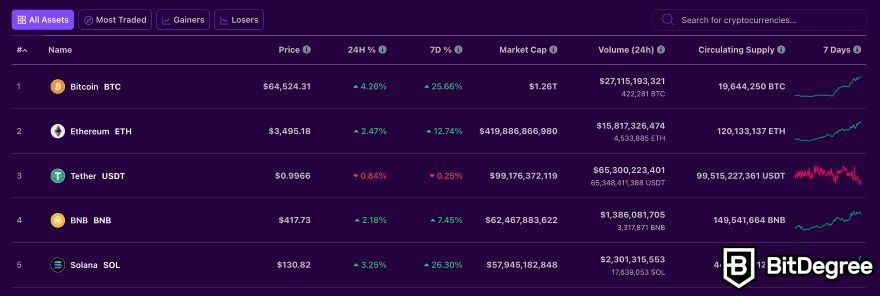
As a bit of a sidenote here, I do also want to point out one thing - there are A LOT of copycat projects and coins with similar names out there. Sometimes, exchange platforms get it wrong, themselves, and link users to unrelated assets.
How to spot the real Pi Network? Well, three things - first of all, the logo. If it’s different, it’s a different project altogether. Secondly, the name “Pi Network” is the correct name, while something like “Pi DeFi Network Token” is a different thing.

Lastly, as you might have gathered up to this point in the “How to Buy & Sell Pi Coin”, you can now trade Pi on several exchanges. But pay close attention to the listing details, make sure you're not swindled into getting the wrong coin.
How to Buy & Sell Pi Coin in 2025
The current state of things has changed somewhat - while the liquidity may be limited, Pi Network coin is now publicly available on some exchanges. So, if you’re still wondering, “Can I sell my Pi coins?”, the answer now depends on whether the tokens have been migrated to the Open Mainnet or not. Tokens still in the mobile app remain non-transferable and cannot be sold or withdrawn.

Previously, it was unclear when this would happen. People had been predicting the mainnet launch somewhere in 2022 or 2023, but as we now know, the Open Mainnet officially launched on February 20, 2025.
Now that trading is technically possible, and assuming Pi will continue to act like any other coin/token on the market, you may be able to trade it on CEXs that support Pi/USDT pairs, and potentially DEXs in the future, if Pi Network allows smart contract interoperability. So, allow me to give you a super-quick guide on how to buy & sell Pi coins!
How to Buy and Sell Pi Coin on MEXC
If someone asked you where to buy Pi coin, now you know that it is publicly available on some centralized exchanges. At the time of writing, Pi is mostly available through spot trading platforms.
This is also the case for MEXC, which offers Pi/USDT and Pi/USDC. That said, let me show you how you can buy and sell Pi coin on MEXC using the desktop platform.
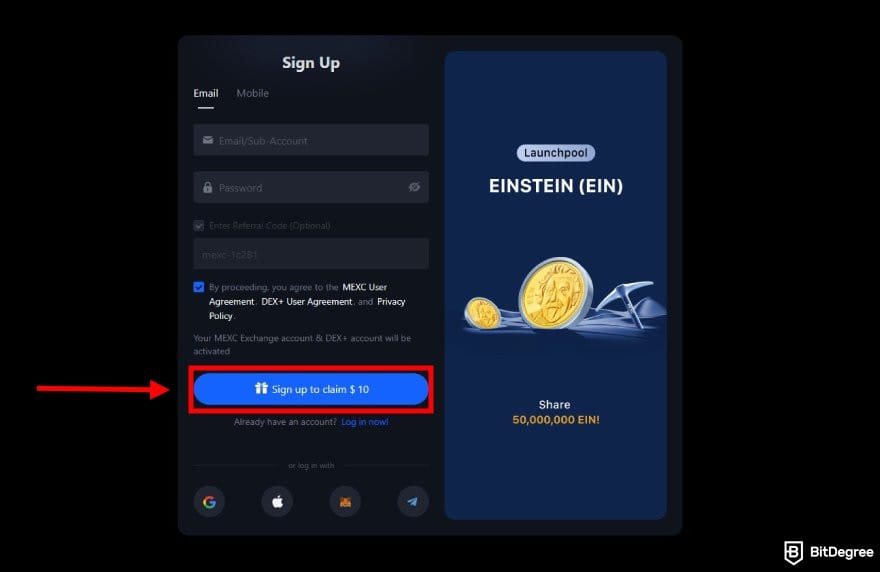
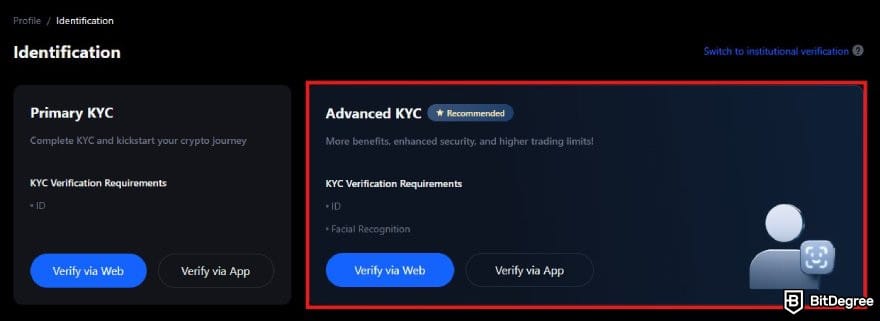

📚 Read More: How to Deposit Crypto to MEXC
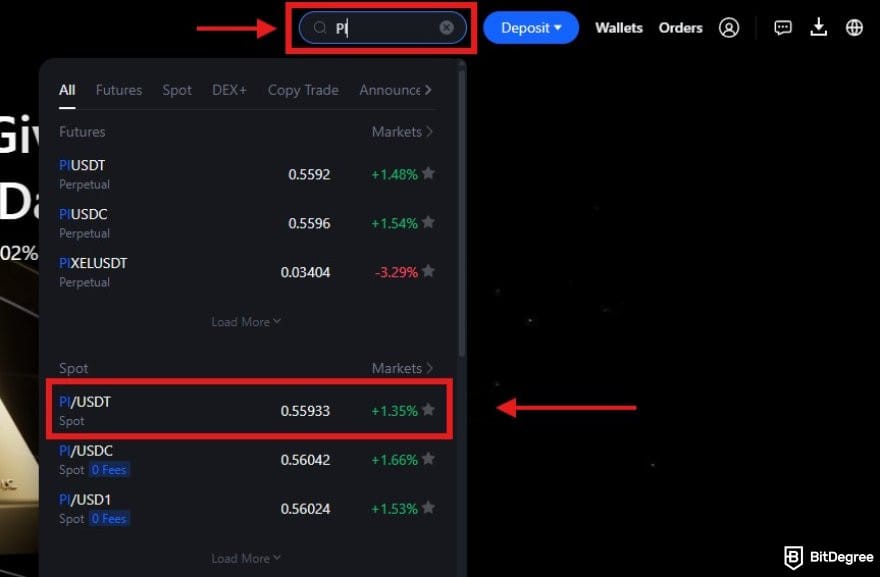
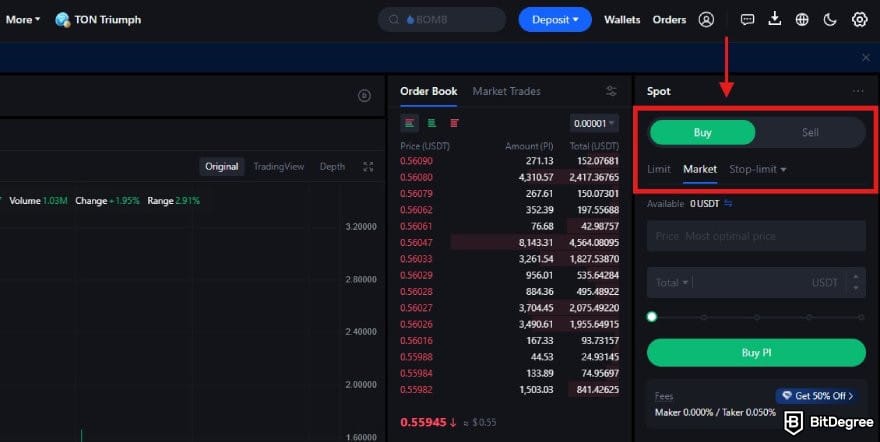
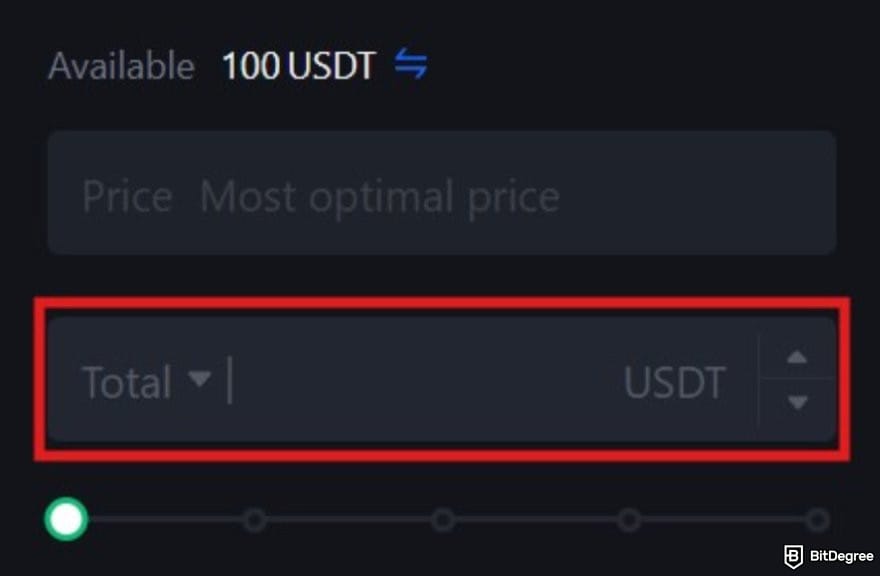

And that's it! Once you place your order, you can track it under the [Open Order] tab at the bottom of the page. Remember to check the associated fees before you finalize your transaction to avoid any unexpected charges.
Another thing worth mentioning is that, while the exact steps might differ, you can also do this in other exchanges that support Pi coin trading pairs like Bitget and Gate.
Buying and Selling Pi Coin on Binance
Now, bear with me for a bit. At the time of writing, there is no official confirmation that Binance will list Pi anytime soon. But, what if it were, and you could buy Pi using fiat on the platform? Looking at how to buy & sell Pi coins via this method, you’ll expect that the process would be far easier.
Let’s walk through how that would look:
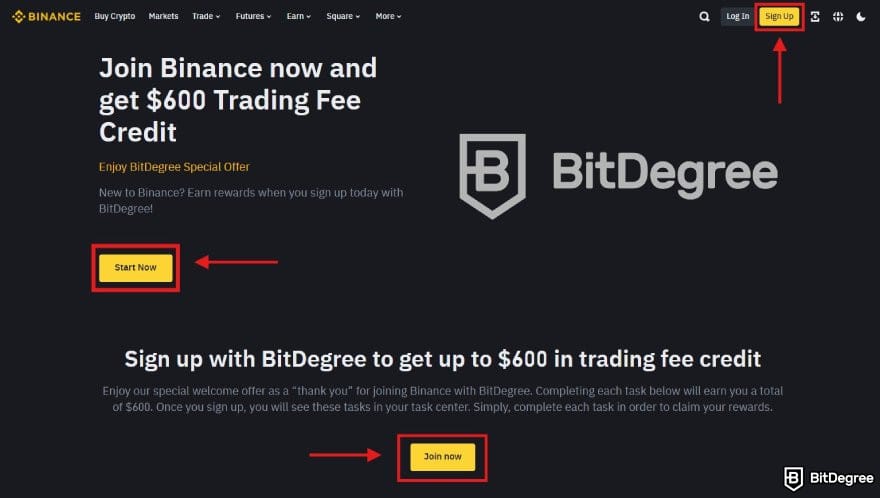

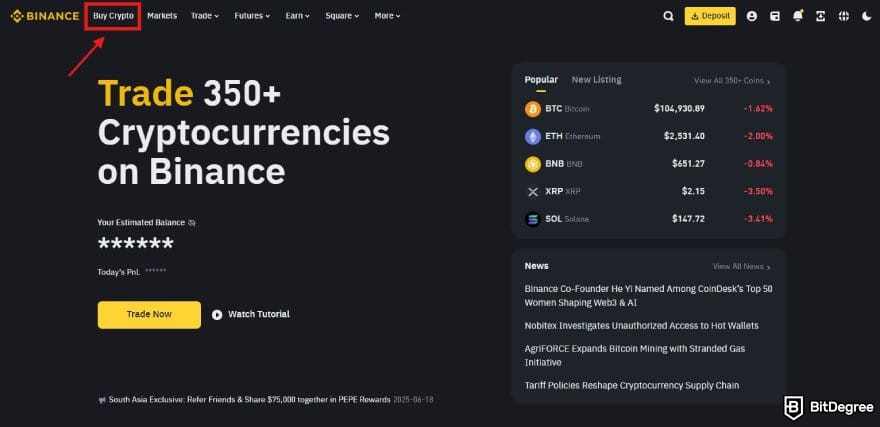
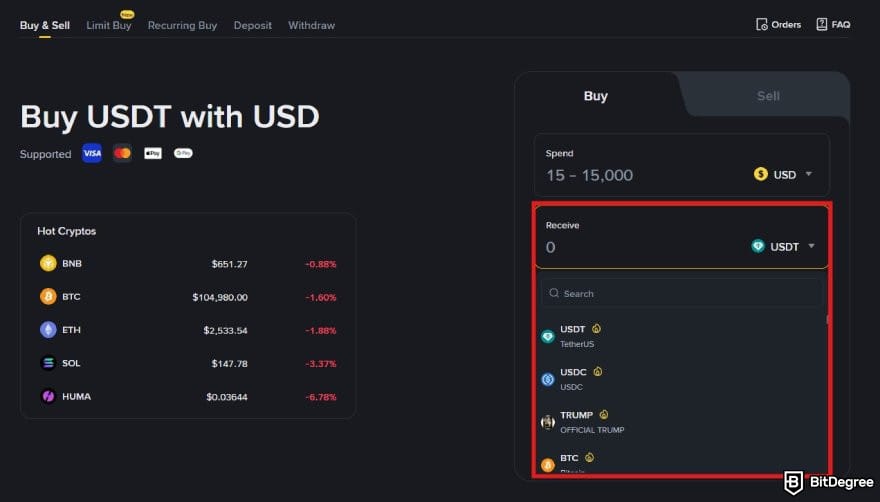
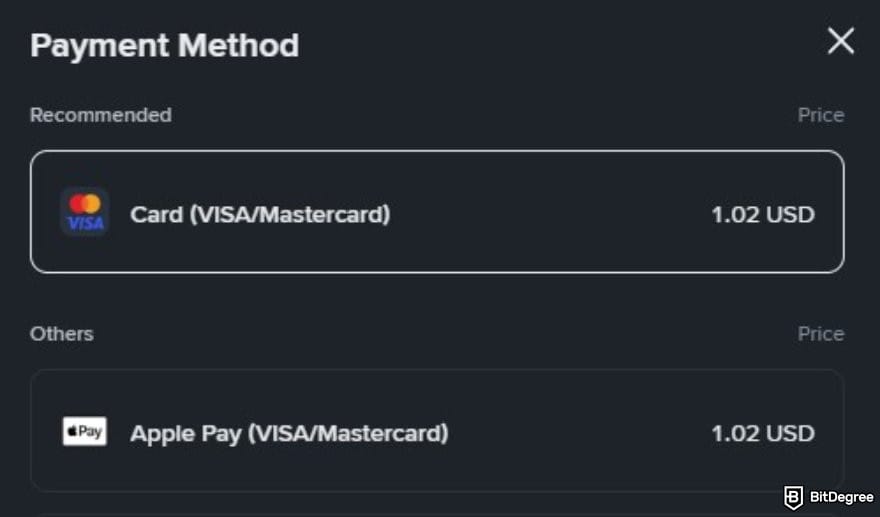
I will say - thanks to the user-friendliness offered by Binance, this section of the “How to Buy & Sell Pi Coin” tutorial is very straightforward.
If you’re still wondering how to sell Pi coins, the process will look just as simple - navigate to the same tab, select [Sell], and then choose the asset/currency that you’d like to receive. After filling out all of the information and passing through the confirmations, you’ll have sold your Pi holdings!
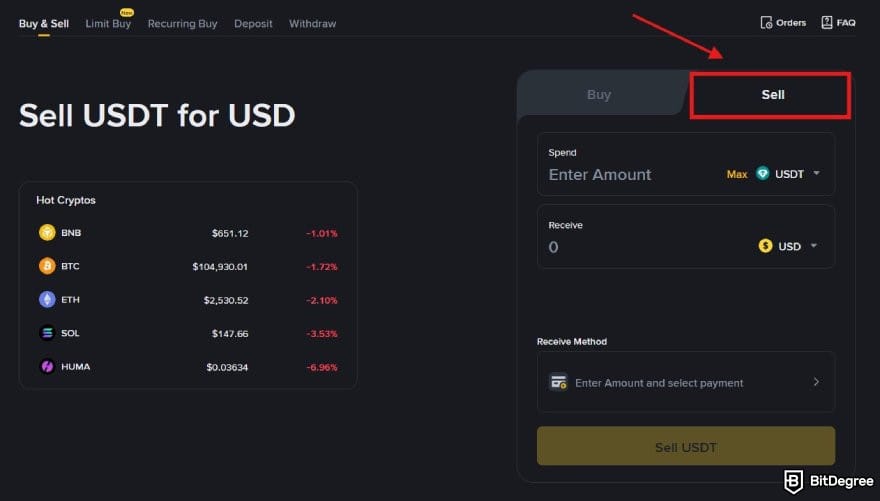 If all seems in order, set the amount you want to trade, fill out the order information, and click the confirmation button.
If all seems in order, set the amount you want to trade, fill out the order information, and click the confirmation button.
Buy & Sell Pi Coin via Spot Market
Another option is to trade your Pi coins for another asset, or vice versa. Again, this process would be straightforward and streamlined to be as simple to do for beginners as possible. Well, at least on the Binance crypto exchange.
📚 Check Out: An Extensive Guide to Binance Spot Trading
Trading different crypto assets for Pi would involve utilizing the Spot market. Here is how it would work if Pi coin were available on Binance:
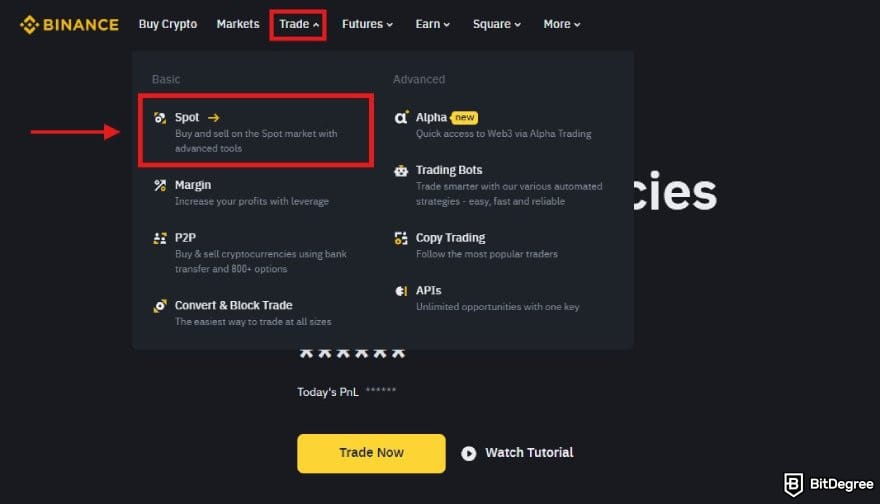
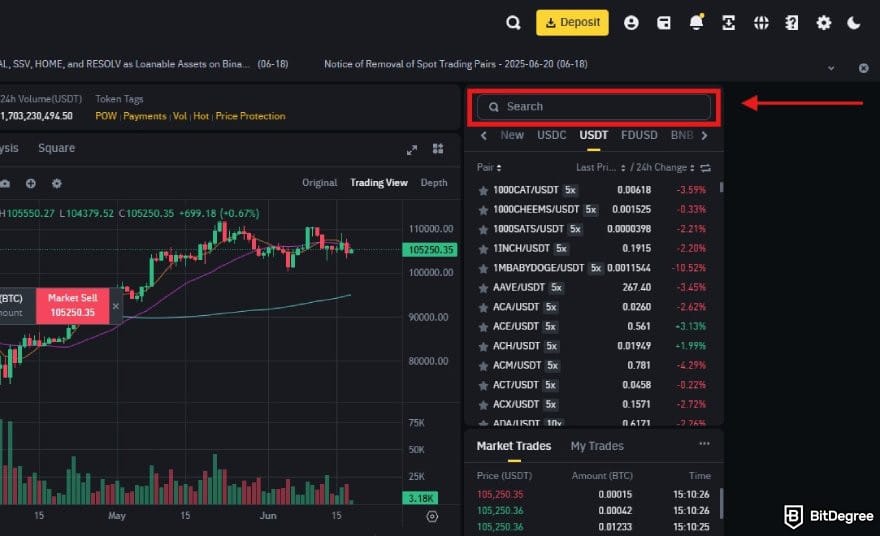
 In most cases, it really is that simple! In the examples above, I’m using different assets, since Pi isn’t available to be traded on Binance just yet. However, if you learn how to sell Pi crypto now, it’ll make things a lot easier in the future!
In most cases, it really is that simple! In the examples above, I’m using different assets, since Pi isn’t available to be traded on Binance just yet. However, if you learn how to sell Pi crypto now, it’ll make things a lot easier in the future!
The DEX Route
As with any new asset out there, before being listed on major exchange platforms such as Binance, Kraken, or Coinbase, tokens are often available to be traded on specific DEXs. However, that's not the case for Pi coin. As of the time of writing, the coin is not available on any DEXs yet. But you can't say that there is 0% chance that it will be available at some point in the future.

Which DEX Pi would be supported on is still currently unclear, but the good part here is that it doesn’t really matter - individuals looking into how to sell Pi Network coin will be glad to hear that the process would be very similar to most decentralized exchanges on the market.
📚 Check Out: Best Decentralized Exchange
So, for simplicity’s sake, I’ll be using PancakeSwap as an example.
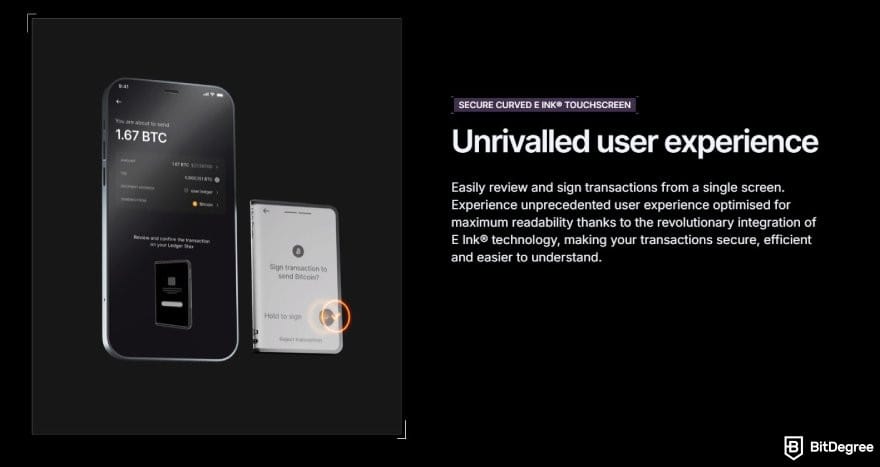
You can purchase the required cryptocurrency on a major exchange platform, such as Binance, for fiat money. Let’s assume that you’ll need BNB coins - they can be bought very easily via the aforementioned method.

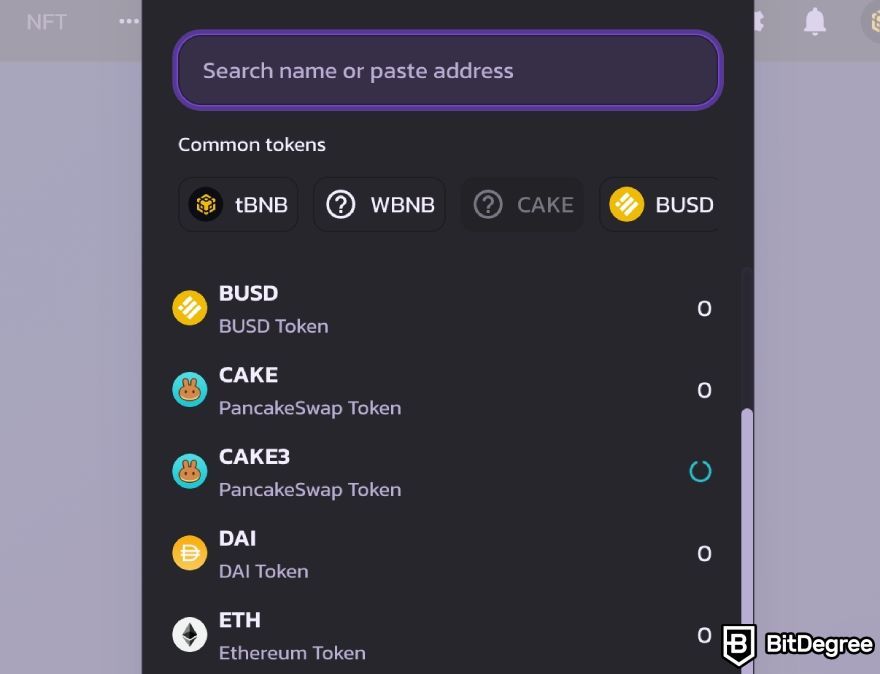
If you find yourself wondering will Pi crypto be worth anything, and thus want to buy some coins, and need to paste in the contract address manually, be very careful - make sure that you take the address from an official resource, such as the Pi Network official website.
It’s very easy to make a mistake and copy-paste some scammy lookalike - naturally, you wouldn’t want that to happen.
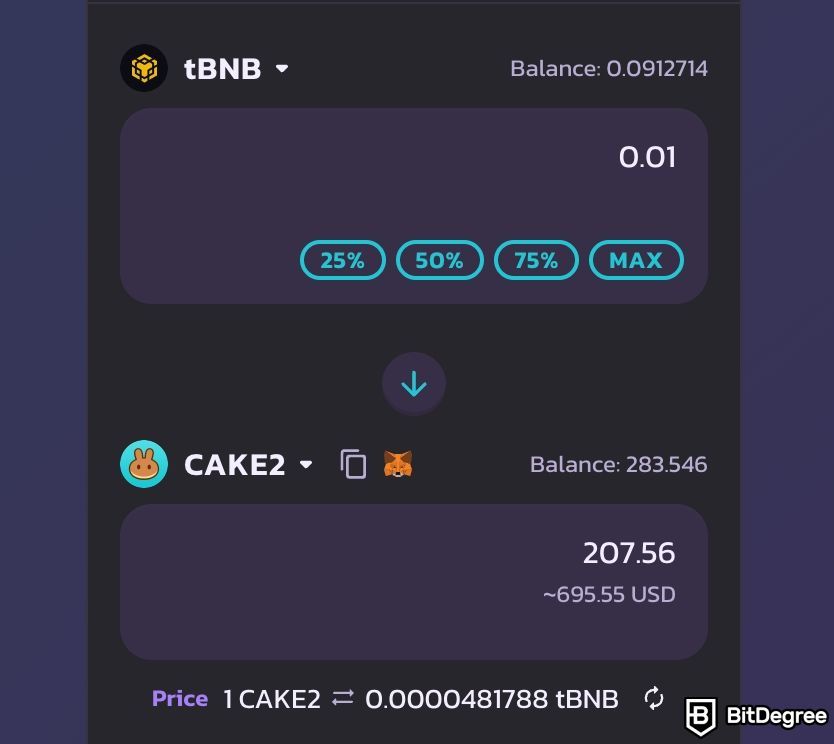 Note that you might need to add the token manually to your wallet, so that it would be able to read/show the balance to you. It’s just a UI thing, though. The tokens would still get transferred to your wallet, either way.
Note that you might need to add the token manually to your wallet, so that it would be able to read/show the balance to you. It’s just a UI thing, though. The tokens would still get transferred to your wallet, either way.
An Overview of Pi Network
Now that we’ve got all of the core questions answered and out of the way, let’s talk a bit more about the Pi Network itself - what this project is, what makes it special, why it’s often seen as ‘controversial’, and everything in between.
So, let’s take it from the top.

Did you know?
Subscribe - We publish new crypto explainer videos every week!
What is a Rug Pull in Crypto? (Meaning + Examples)


What Is the Pi Network?
While Pi popped up on many people’s radars only in the past few months, the project is actually quite old! It was conceived in 2019, as you might imagine, though, for the most part, it remained relatively obscure in its early years. It took some time to get the ball rolling.
The big question that’s on everyone’s minds likely sounds a little something like this: What in the world even is the Pi Network, in general?
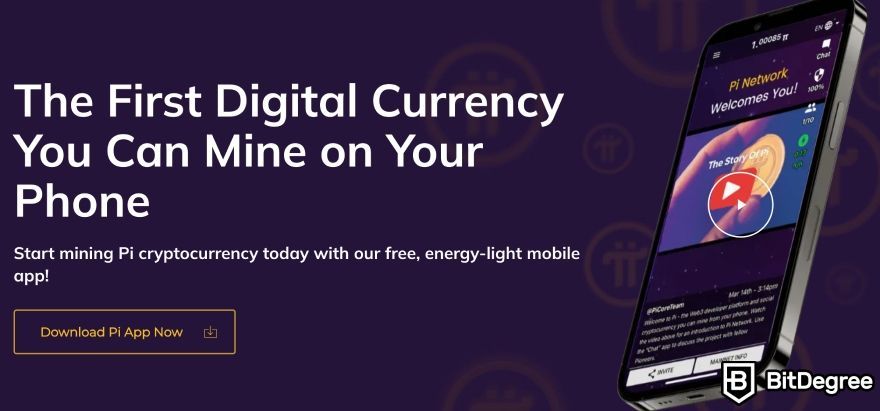
Well, to quote the project’s official website, the core mission of Pi is to:
Build the world’s most inclusive peer-to-peer ecosystem and online experience, fueled by Pi, the world’s most widely distributed cryptocurrency.
In other words, the goal is evidently quite abstract - to create a designated Web3 ecosystem, based completely on the new Pi blockchain network.
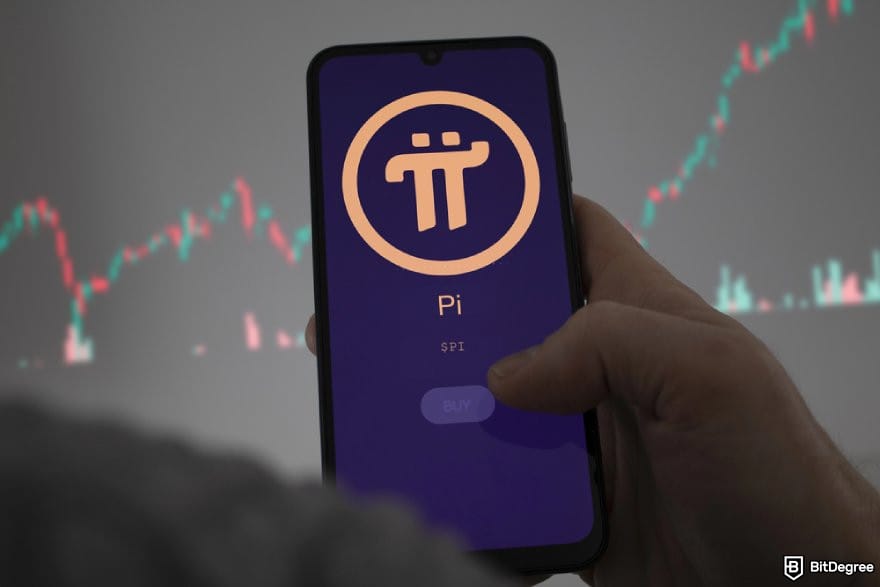
This, in turn, puts other aspects of the project into some sort of perspective. The Pi coin would act as a sort of utility token (a digital asset based on the underlying blockchain[2]), fuelling the entire ecosystem, while the mining processes would fuel the development of the elements within it - e.g., the native dApps built on the newly established blockchain.
📚 Read More: What Is Pi Network?
How Pi Aims to Stand Out
Sounds pretty straightforward, doesn’t it? Well, it’s certainly not a simple feat to accomplish - it does, however, make sense, seeing as Pi is looking to tackle the most common mass adoption issues faced by the Web3 industry, and onboard a huge number of people to the space, while still preserving the decentralization and integrity of this new network.
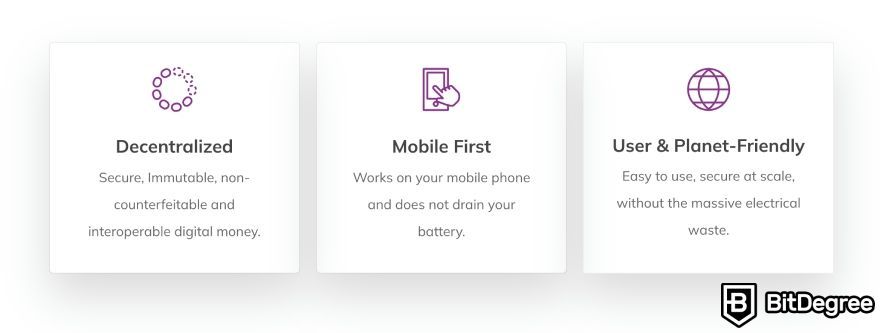
Pi’s answer to accomplishing that is the aforementioned mining mechanism - it appears to be an ASIC-resistant crypto project, which essentially means that the mining processes would primarily take place on users’ mobile devices.
As of now, millions of users have accumulated Pi this way, although only users who’ve passed KYC and migrated their balances to the Open Mainnet can use the coin outside the app.
The Controversies Around Pi
That being said, as I’ve hinted earlier in this “How to Buy & Sell Pi Coin” tutorial, the project isn’t without its controversial sides. Most of the controversies appear to revolve around sustainability, namely, just how sustainable is the business model that Pi employs, especially since it’s largely referral-based?

On one hand, Pi was created by Stanford PhDs and people who have major credentials working with other high-profile projects in the digital space. This lends an aura of legitimacy to the entire ordeal. Naturally, this means that the founders are doxed, as well.
In the context of crypto projects, “doxed” means the project’s founders have publicly revealed their real names and backgrounds, which is a sign of transparency in a space where many stay anonymous.
On the other hand, though, users have claimed the app to be less-than-ideal, functionality-wise, which raises some red flags. On top of that, with referrals being the main driving force behind user engagement, there’s a lingering sense of urgency. Now that Pi is tradable in some exchanges, what happens next? Can this massive growth in popularity be sustainable, or was it a bubble waiting to pop?


- Secure and reliable
- Accepts fiat currencies
- Lots of trading options
- Reputable exchange
- Accepts fiat currencies
- Offers various trading options

- Huge trading variety
- Regulation-compliant around the globe
- Fair trading fees
- Beginner-friendly
- A wide array of features
- Vast number of different crypto coins & tokens

- Beginner-friendly
- Secure
- Decent trading and withdrawal fees
- Crypto.com Visa Card
- Automated tools & bots
- Ecosystem synergy with CRO
Mainnet Uncertainty and Lingering Doubts
Furthermore, the big question for a long time was when the Mainnet would go fully public. While many expected it to launch in 2022 or 2023, that didn’t happen. The Open Mainnet finally launched in February 2025, allowing users who completed KYC and migrated their tokens to trade Pi.
However, many users are still stuck in the enclosed phase, waiting to complete KYC or migrate their balances to access the open network.
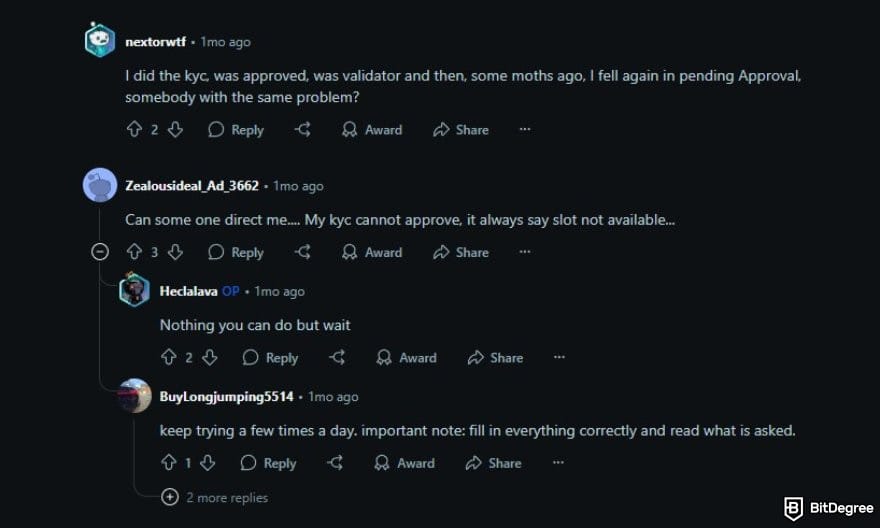
Completing KYC and migration is possible, but often frustrating, especially for long‑time users who now find themselves caught in technical hurdles and lengthy queues.
These (and related) questions still linger wherever Pi coin is mentioned. And while the launch of Open Mainnet has brought some clarity, not everyone feels fully confident in the project, especially given that concrete, specific, and transparent updates haven’t always been easy to come by.
It’s all part of the process of figuring out not just “Can I sell my Pi coins?” or “How do I sell my Pi coins?”, but rather whether the project’s vision is credible, sustainable, and worth engaging with in the first place.
Conclusions
And so, that’s a wrap - now you know how to buy & sell Pi coins on platforms like MEXC, as well as how the process might look whenever the asset becomes available on bigger CEX like Binance or DEX platforms.
Admittedly, the Pi Network is in a very unusual and interesting position, as far as everything surrounding the project is concerned, to be honest. It used to be the case that you couldn’t buy it or sell it, only “mine” it. And even now, that still applies to many users who haven’t yet completed KYC or migrated their tokens to the Open Mainnet.
Whatever the case may be, if you're interested in how to buy & sell Pi coins, it’s now a matter of waiting for broader access and potentially seeing Pi listed on more major crypto exchanges. With so much buzz still surrounding the project, uncertainty remains.
As always, make sure to do your own research and evaluate both the risks and the long-term vision before making any decisions to invest or engage with the coin.
The content published on this website is not aimed to give any kind of financial, investment, trading, or any other form of advice. BitDegree.org does not endorse or suggest you to buy, sell or hold any kind of cryptocurrency. Before making financial investment decisions, do consult your financial advisor.
Scientific References
1. LH White, Cato J.: 'The Market for Cryptocurrencies';
2. Härdle W. K., Harvey C. R., Reule R. C. G.: 'Understanding Cryptocurrencies'.
